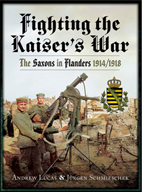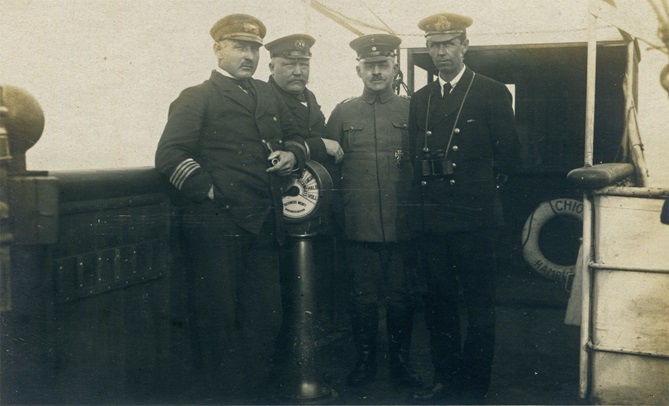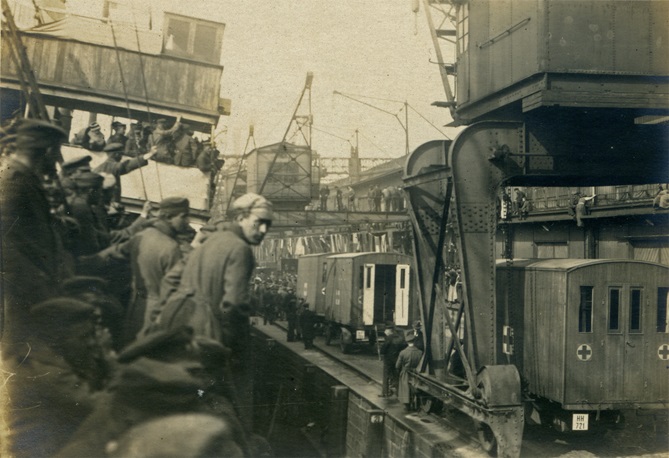Simply click on each image to open it at full size in another browser tab or window.
The following photos are from the homeward voyage in March-June 1919 aboard the passenger steamer Stamboul, one of a number of German freighters operating with the Ottoman Navy since 1914. See this thread on the Great War Forum for a full discussion of its history.
According to this thread on GMIC (source unclear) the units evacuated aboard the Stambul comprised the following; units marked in red have not yet been corroborated exactly by additional sources. If these figures are correct the Saxons comprised about two thirds of the total complement of 2,171 passengers.
I.& II. / IR 415 (1350 men - presumably meaning 'all ranks')
6. / FAR 279 (100 men)
'Elements' of (Württemberg) 7. Ldw. Div. (210 men)
?. / REIR 2 (260 men)
Fuhrpark-Kolonne 267 (80 men)
Div.-Funker-Abt. 109, Gebirgs-Funker-Abt. 2 and a überplanmäßiger F.-Station ("supernumerary telephone station"; total 40 men for all three small units)
Bäckerei-Kolonne 70 (25 men)
Bäckerei-Kolonne 78 (15 men)
Feldschlächterei 184 (15 men)
Feldpost 149 (6 men)
Soldatenheim Nikolajew and Krim (85 men)
Above: This group are the 'commanding officers' of the Stambul. I believe that the two gentlemen on the left are officers of the ship's crew. The third man has a very dark cap band and collar piping, plus what looks like a Saxon reserve cockade. I believe he is most probably an officer of 6. / FAR 279, but have not yet been able to put a definite name to his face. As the sole officer present from the passenger complement he is presumably the currently acting Transportführer, with authority over the embarked troops... though the battalion commanders of IR 415 would surely outrank him even if he were the battery commander. The fourth man must surely be the 'British escort officer' who joined Stambul at Constantinople. He is mentioned as dealing with a British 'military commission' intent on coming aboard and searching for weapons while Stambul and the accompanying Varna (with III./415 and others aboard) were anchored off Deal on 11th April 1919.
The lifebelt in the background is from Chios, another German freighter in Ottoman service which was torpedoed in August 1915. We can only surmise that some components and fixtures from the wreck must have been salvaged and reused on the battle-damaged Stambul when the latter was repaired and refitted in early 1918.
Above: Not surprisingly our unknown photographer recorded the final homecoming of the Stambul to Hamburg on 17th April 1919, and the resulting photo was also chosen to appear in the regimental history of IR 415. According to that work, it was a glorious sunny day. Stambul was played into harbour by a naval band in a pinnace, and greeted at the quay by Senator Dr. Hagedorn. This would be her last voyage in German service, as the ship would now be surrendered to the British and resume commercial service until 1937.
The ship had been quarantined at anchor at Brunsbüttel since the 13th, and we can see here that ambulances had been prepared for her arrival in Hamburg. The entire ship's complement were deloused and issued with fresh clothing, after which they expected to be free (as all the necessary discharge papers had been prepared in advance during the voyage).
In the evening uproar ensued when it was announced that due to a single typhus case on board the ship, they would all be spending three weeks in quarantine at Lockstedter Lager. This order was soon annulled in the face of general outrage. The first rail transport of 415ers set out for Dresden via Berlin early on the 18th, but was halted at Elsterwerda near the Saxon border and ordered to proceed to the Saxon Truppenübungsplatz Königsbrück for quarantine. In response virtually everyone simply left the train without orders, rendering the point moot. A small administrative detail brought the regimental paperwork to the barracks of IR 177 in Dresden, where IR 415 was officially dissolved on 1st June.
- << Prev
- Next








